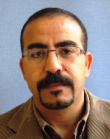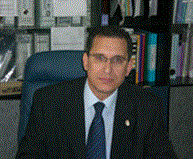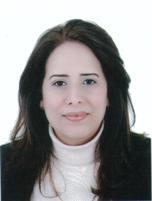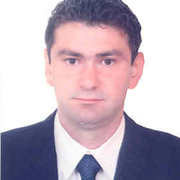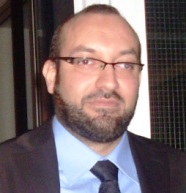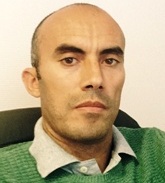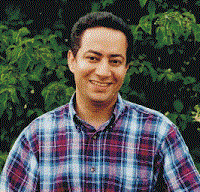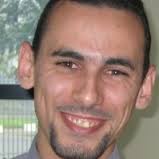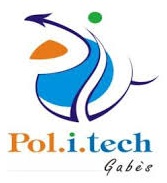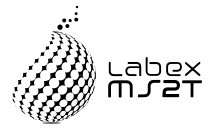|
|
|
TutorialsTutorial 1: Paysage de la recherche scientifique en Tunisie: Etats des lieux et perspectives By Dr Khaled Ghédira, Professeur à l’ISG Tunis, Tunisie
Abstract: Biography:
Khaled Ghedira has received the bachelor degree in mathematics (FS-Tunisia); the Engineer degree in hydraulic (ENSEEIHT-France); the specialized Engineer degree in computer science and applied mathematics (ENSIMAG-France), both the Master and the Ph.D degrees in Artificial Intelligence (ENSAE-France) and finally the Habilitation degree in computer science from Ecole Nationale des Sciences de l'Informatique (ENSI-Tunisia).
Tutorial 2: Confidence-based Reasoning in Stochastic Constraint Programming By Dr Brahim HNICH , Taif University,Taif, KSA.
Abstract: In this talk we provide an elementary introduction to constraint programming, constraint propagation and global constraints. Biography: Brahim Hnich is a Professor of Computer Science at the department of Computer Engineering at Izmir University of Economics. He holds a Bachelor of Science degree in Computer Engineering from Bilkent University (1997, Turkey), a PhD in Computer Science from Uppsala University (2003, Sweden), as well as a HDR in Computer Science from Montepellier II University (2008, France). After, his doctoral studies, He worked as Research Fellow at the Cork Constraint Computation Center (Ireland). He obtained his Docentship in 2004 from Uppsala University. He is an associate editor of the Artificial Intelligence Journal and the coauthor of more than 44 journal papers covered by Science Citation Index. Two of his research papers have been selected among the best papers at the European Conference on Artificial Intelligence (AI) in 2004 and at the International Joint Conference on AI in 2005. His research interests include, among others, (stochastic) constraint programming, global constraints, and symmetry in combinatorial problems.
Tutorial 3: Multichannel Scheduling techniques for Cognitive Radio Sensor Networks By Dr Hanen IDOUDI, National School of Computer Science (ENSI), University of Manouba, Tunisia
Abstract: Cognitive radio is envisioned to alleviate the shortage of spectrum by defining more smart and flexible wireless networks that can dynamically optimize spectrum usage. To improve the performance of Wireless Sensor Networks (WSN) in terms of throughput, energy consumption and cost, cognitive radio was recently applied. The two major drives toward the new paradigm of the Cognitive Radio Sensor Networks (CRSN) are the underutilization of many licensed spectrum bands and the congestion problem in unlicensed bands for WSN. The concept of CRSN mitigates the inefficient overall utilization of wireless spectrum by offering sensor nodes temporary usage of the available licensed channels via Dynamic Spectrum Access (DSA) with the condition that they will release them once the presence of the licensed user is detected. With the DSA, one other major advantage was exploited by the WSNs. The retransmission of lost packets is reduced which saves energy, also nodes can change dynamically their transmission power to suit channel characteristics which reduces the power consumption. To opportunistically access the vacant licensed frequency bands, scheduling algorithms are investigated. Most existing scheduling algorithms have been proposed only for Cognitive Radio Networks (CRNs). These schemes have been well investigated mostly under throughput efficiency perspective. Fairness, interference and mobility are also considered in some studies. Our goal is to define novel techniques aimed at minimizing energy consumption and improving network lifetime in CRSNs. In our work, we investigate many approaches to define novel scheduling algorithms for CRSN that schedule the nodes activity on different available channels while minimizing the schedule length for data gathering. These algorithms allow non interfering nodes to transmit in the same time slot on the same channel, taking into account the presence of primary users. Biography: Hanen Idoudi earned her engineering and master degrees in computer science at the National School of Computer Science (ENSI), Tunisia in 2001 and 2002, respectively. She received her Ph.D degree in 2008 jointly from ENSI and University of Rennes 1, France. She was member of IRISA, INRIA, Rennes from 2005 to 2008. She is currently an associate professor at ENSI and a member researcher in the CRISTAL laboratory. Also, since 2011, she is a visiting scientist at IRIT-University of Toulouse, France for several short visits. Her research focuses on issues related to wireless networking, ad hoc, sensor, mesh and cognitive radio networks, MAC optimization, networks modeling and performances, routing, quality of service (QoS), energy conservation, cross-layer designs, etc. Previously, she worked as a lecturer at the “Institut Supérieur des Arts Multimédia” (ISAMM)(2003-2005). Besides, she has industrial experience in computer networks administration and security while she worked as an engineer then as a training manager at Opennet MEA in Tunisia (2001-2004). She is an expert for many international organizations such as LPI-Central Europe, LPI-Canada and AUF (Agence Universitaire de la Francophonie). She is member of several scientific societies and associations such as ISOC and IEEE and an ICANN Fellow.
Tutorial 4: An overview on Multi-Label learning By Dr Fahd Abdallah , University Institute of Technology- Lebanese University (Lebanon)
Abstract: Machine learning is the field of research that concentrates on the formal study of learning systems. In the supervised framework of machine learning, the learning is performed on labeled instances in order to define a function that predicts correctly the labels of the training examples; the performances of the obtained function are evaluated according to its ability of generalization when predicting the labels of examples not in the training set. If the labeling of the training examples is categorical (discrete labels or classes), the learning task is called classification. The presentation will show an overview on Multi-Label learning for classification which deals with the problems in which each instance can belong to multiple classes at once. Traditional single-label learning tasks (binary or multi-class classification) are a special case of multi-label learning task, where each instance is assigned only one class. Multi-Label learning has found many real world applications, such as text categorization and semantic scene classification. In such problems, the learning task consists in predicting a set of labels for each new instance, based on a training set. Several criteria to evaluate performances of multi-label classifiers will be shown in the presentation. Biography:
Tutorial 5: Workshop on Sensor Networks By Dr Hichem Snoussi, Université de Technologie de Troyes (France)
Abstract: Biography: Hichem Snoussi was born in Bizerta, Tunisia, in 1976. He received the diploma degree in electrical engineering from the Ecole Superieure d'Electricite (Supélec), Gif-sur-Yvette, France, in 2000. He also received the DEA degree and the Ph.D. in signal processing from the University of Paris-Sud, Orsay, France, in 2000 and 2003 respectively. Between 2003 and 2004, he was postdoctoral researcher at IRCCyN, Institut de Recherches en Communications et Cybernétiques de Nantes. He has spent short periods as visiting scientist at the Brain Science Institute, RIKEN, Japan and Olin Neuropsychiatry Research Center at the Institute of Living in USA. Between 2005 and 2009, he was associate professor at the University of Technology of Troyes, France. He has obtained the HDR degree from the University of Technology of Compiègne in 2009. Since 2010, he is Full Professor at the University of Technology of Troyes. His research interests include Bayesian techniques for source separation, information geometry, differential geometry, machine learning, robust statistics, with application to brain signal processing, astrophysics, advanced collaborative signal/image processing techniques in wireless sensor/cameras networks,..
Tutorial 6: Deep learning pour la détection et la reconnaissance dans les vidéos By Dr Fethi Smach, ActivNetworks, France Abstract: Un succès impressionnant des méthodes deep learning ces dernières années repose sur les avancées algorithmiques du travail révolutionnaire de Hinton et LeCun pour les deep belief networks, notamment à travers la maîtrise des méthodes de rétro-propagation pour des réseaux à grand nombre de couches. Dans ce travail nous nous sommes intéressés à la fusion des données dans un contexte deep learning pour l'analyse de la vidéo.
Biography: Fethi Smach a obtenu sa thèse de doctorat au Laboratoire Electronique Image et Informatique (Le2i) de Dijon, en 2007. Il a réalisé un transfert de technologie de ses travaux de recherche sur la détection et reconnaissance des objets couleurs vers une PME, qui commercialise un outil de détection des défauts. Entre 2008 et 2010, il est devenu ingénieur de recherche au CEA, ou il a travaillé sur le projet Européen LINDO (Large scale distributed INDexation of multimedia Objects), où il a contribué à la définition des algorithmes innovants sur la vidéosurveillance intelligente. Au sein de l'INRIA, entre 2010 et 2011 il a occupé un poste chercheur en y travaillant sur un projet ANR - ICOS-HD: il s'agit d'un projet visant proposer des nouvelles solutions de description scalable des contenus vidéo Haute Définition (HD) pour la télévision HD. Tout au long de ce projet Fethi Smach a contribué à augmenter, de manière substantielle, le niveau de performances d'un algorithme pour une application conjointe de compression et d'analyse vidéo. Entre Février 2011 et Mai 2012, il est chez une Startup parisienne, il a définit, avec un autre chercheur et un ingénieur, des solutions d'optimisations vidéo temps réel. Sur le plan académique, il a encadré 3 Masters et co-encadré 2 Thèses de doctorat. Il a obtenu la qualification du Maître de conférences en section 61, Génie Informatique, automatique et traitement du signal. Ses activités de recherche comprennent l'analyse vidéo : détection et reconnaissance, l'approche bayésienne, apprentissage statistique. En Juin 2012, Fethi Smach a rejoint Profil Technology comme Data Scientist pour y poursuivre ses travaux sur la vidéo et la recherche par le contenu dans des bases d'images et de vidéos.
Tutorial 7: Problème de tournées de véhicules sélectives By Dr Aziz Moukrim, Laboratoire Heudiasyc, CNRS-Université de Technologie de Compiègne, France Abstract: Biography:
Tutorial 8: Exact and Heuristic Approaches for Packing Problems. By Dr Mehdi Serairi, Laboratoire Heudiasyc, CNRS-Université de Technologie de Compiègne, France Abstract: We investigate two generalizations of the classical one-dimensional bin packing. In the first part, we address the variable sized bin packing problem. This problem requires packing a set of items into a minimum-cost set of bins of unequal sizes and costs. We investigate lower bounds for this problem as well as exact algorithms. We show that embedding a tight network flow-based lower bound, dominance rules, as well as an effective knapsack-based heuristic in a branch-and-bound algorithm yields very good performance. In addition, we prove that the particular case with all weight items larger than a third the largest bin capacity can be restated and solved in polynomial-time as a maximum-weight matching problem in a nonbipartite graph. Moreover we present several optimization-based heuristics for this problem. We analyze their empirical performance on a large set of randomly generated test instances with up to 2000 items and seven bin types. In the second part of this thesis, We present a comprehensive theoretical and computational study of lowers bounds for the two dimensional bin packing problem with an emphasis on polynomial bounds that can be computed efficiently. we present a synthesis of dominance relationships between the different lower bounds. Biography: Mehdi Serairi a soutenu sa thèse à l’Université de Tunis. Il a ensuite rejoint l’UTC, et plus particulièrement Heudiasyc, en tant qu’ingénieur d’études puis ATER. C’est ensuite à l’école des Mines de Nancy, dans le laboratoire LORIA, que Medhi Serairi a occupé un poste d’ATER. Ses recherches portent principalement sur les problèmes de packing, ordonnancement et tournées de véhicules. Depuis septembre 2013, il est enseignant-chercheur à l'université de Technologie de Compiègne et membre de l’équipe RO (Réseaux, Optimisation) d’Heudiasyc.
Tutorial 9: Sécurité de l’Internet des Objets By Dr Yacine Challal, ESI-Alger, Algérie Abstract: Une évolution majeure qui s’inscrit dans la continuité des développements récents des technologies de l’information et de la communication et des systèmes embarqués, est « l’internet des objets (IdO)». Cette évolution sera accompagnée d’une évolution de l’écosystème technologique environnant dans toute sa complexité. En effet, le réseau mondial Internet a évolué ces dernières décennies d’un réseau de calculateurs à un réseau d’ordinateurs personnels, puis vers un réseau qui intègre tout dispositif communiquant : des tags RFID, des capteurs et actionneurs, des véhicules, et toute sorte de dispositifs électroménagers et personnels. L’internet des objets suscitera des questions, qui concerneront directement la sécurité des biens et des personnes. Par exemple, certaines applications peuvent être étroitement liées à des infrastructures stratégiques telles que la fourniture d’eau et d'électricité, la surveillance de ponts et bâtiments, tandis que d'autres géreront des informations liées à la vie privée des personnes comme leurs déplacements et états de santé. Ainsi, la confiance en l’IdO et son acceptation sont conditionnées par la mise en place de mesures adéquates de protection des données personnelles et de la vie privée. Nous allons montrer que cette « technologie de rupture » à enjeux socioéconomiques importants suscite ses propres challenges de sécurité et de « privacy ». Nous présenterons une évolution de la thématique de sécurité de l’IdO en trois phases : la sécurité efficace pour une informatique embarquée miniaturisée, la sécurité et « privacy » centrée sur l’utilisateur selon le contexte, et une approche cognitive et systémique de la sécurité de l’IdO. En effet, nous montrerons que l’évolution des objets vers plus d’autonomie à percevoir et à agir sur l’environnement, accentuera les enjeux de la sécurité et de la « privacy ». En conséquence, la sécurité de l’Internet des objets devrait aussi évoluer vers plus d’autonomie perceptive et actionnelle en se basant sur une approche cognitive et systémique centrée sur les objets intelligents. Biography: M. Yacine Challal est maître de conférences à l’Ecole Supérieure d’Informatique (ESI-Alger). Il est membre du Laboratoire des Méthodes de Conception des Systèmes (LMCS) et responsable de l’équipe SURES (Systèmes Ubiquitaires Résilients Efficaces et Sécurisés). Il a obtenu ses diplômes de DEA, Doctorat et HDR à l’Université de Technologie de Compiègne en 2001, 2005 et 2012 (respectivement), où il avait occupé le poste de maître de conférences et était membre du laboratoire HEUDIASYC (UMR CNRS 7253). Ses domaines de recherche s’articulent autour de la sécurité et robustesse des systèmes et réseaux. En particulier, il s’intéresses à la sécurité des communications de groupe, la sécurité et fiabilité des réseaux sans fil à fortes contraintes de ressources, la gestion de clés et la conception de protocoles cryptographiques.
Tutorial 10: Annotations d'événements entre systèmes en interaction. By Dr Claude Moulin Laboratoire Heudiasyc, CNRS-Université de Technologie de Compiègne, France Abstract: On considère deux couples de systèmes (A,A') et (B, B'). Dans chaque couple les systèmes sont similaires. Par exemple, deux équipes distantes travaillent simultanément sur le même sujet. Elles utilisent chacune un support tactile de grande taille et un système (A, A') pour l'échange de données synchronisées, et un système vidéo (B, B') pour la communication orale et visuelle. Plusieurs caméras peuvent être activées. Chaque action d'un utilisateur sur les systèmes A et A' déclenchent des séries d'événements qui permettent de synchroniser les effets visuels issus de A et A'. Les systèmes B et B' s'échangent en continu des flux vidéos et des événements lors des effets de caméra. Il s'agit de pouvoir regrouper dynamiquement lorsqu'ils surgissent certains événements des systèmes (A, A') et certains événement des systèmes (B, B'). Le regroupement d'événements permet d'annoter automatiquement les vidéos enregistrées lors de ces sessions de travail et de les visionner après coup à l'aide de ces annotations. Ainsi, chaque couple de systèmes s'échange parallèlement et durant la même période de temps des données en continu ou à partir d'événements surgissant dans les systèmes. Deux flux unidirectionnels d'échange apparaissent dans chaque couple de systèmes. Il s'agit du fusionner certains événements du premier couple avec certains événements du second couple. La solution proposée est basée sur des systèmes multi-agents. Certains agents sont spécialisés sur la reconnaissance des événements requis et chargés de les communiquer. Biography: Après avoir obtenu un doctorat en informatique en 1998, Claude Moulin a travaillé pendant quatre ans dans des centres de recherche en Italie et notamment au CRS4 (Center for Advanced Studies, Research and Development in Sardinia) en Sardaigne. Il est maintenant Maître de conférence en informatique à l'Université de Technologie de Compiègne en France et membre du laboratoire HeuDiaSyc au sein de l'équipe ICI (Information, Connaissance et Interaction). Le laboratoire HeuDiaSyc est une unité de recherche mixte associée avec le CNRS en France (Centre National de Recherche Scientifique). Il a une longue expérience d'enseignant (cours de mathématique dans le secondaire, cours d'informatique à l'université et formation professionnelle). Il a une large expertise en informatique : Documents Virtuels, Ingénierie des connaissances, Systèmes Multi-Agent et systèmes distribués, Interfaces multi-modales et adaptatives. Il a publié de nombreux papiers dans des conférences et des journaux dans ces domaines. Il a participé à plusieurs projets nationaux et européens dans des domaines d'applications comme l'enseignement à distance, ou l'administration électronique. Sa recherche actuelle concerne d'une part des aspects sémantiques (Systèmes à base de connaissance, description sémantique de services, conception d'ontologies) et d'autre part les systèmes favorisant la collaboration entre individus et intégrant une ou plusieurs surfaces tactiles de grande taille.
|
